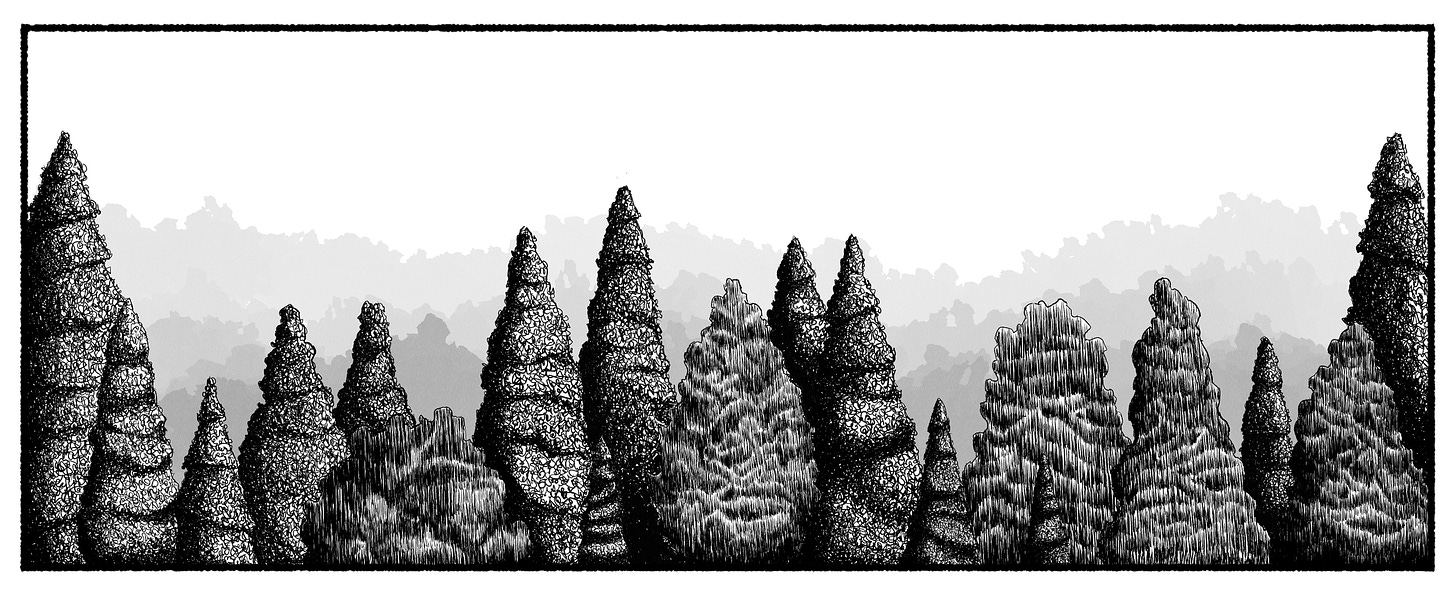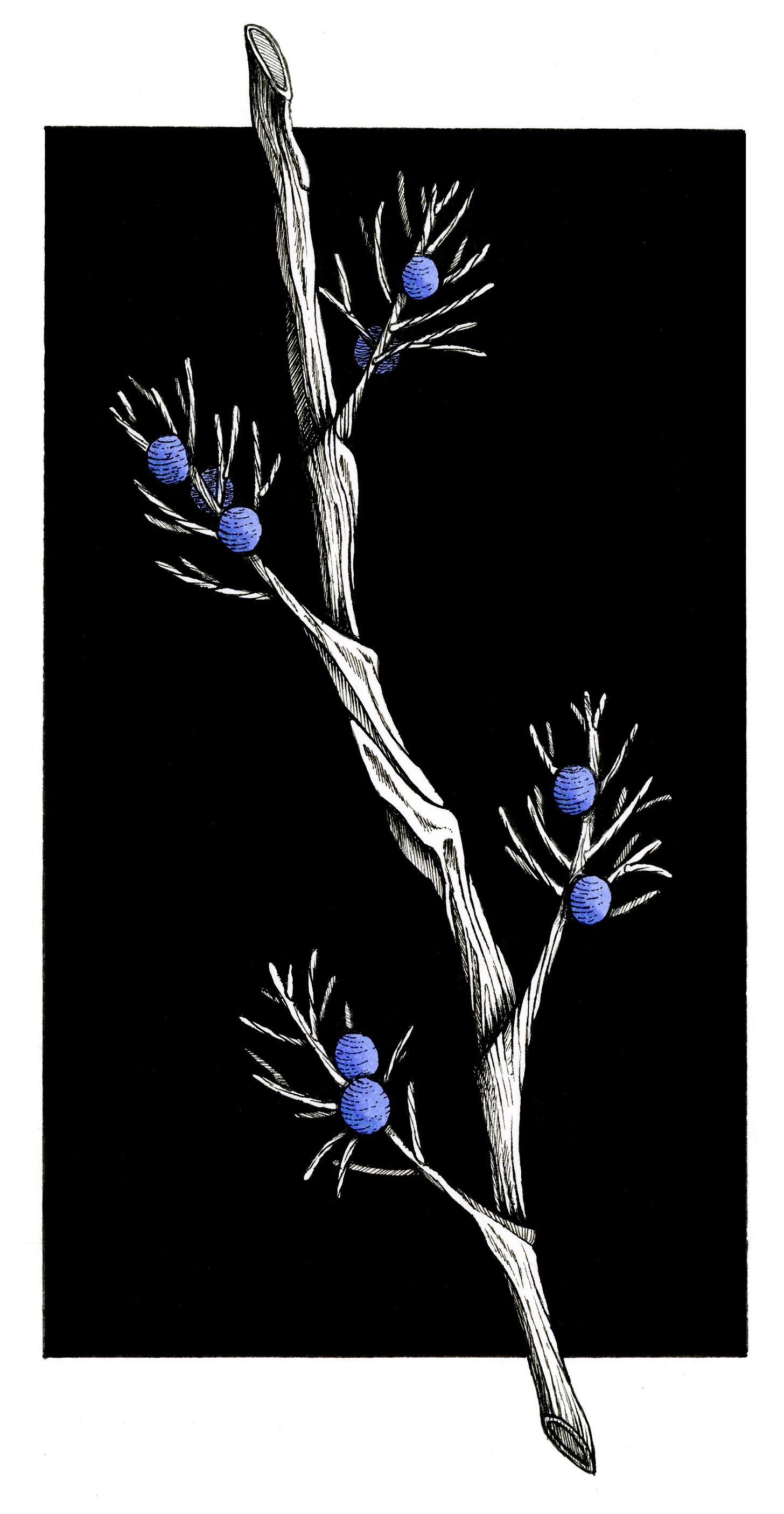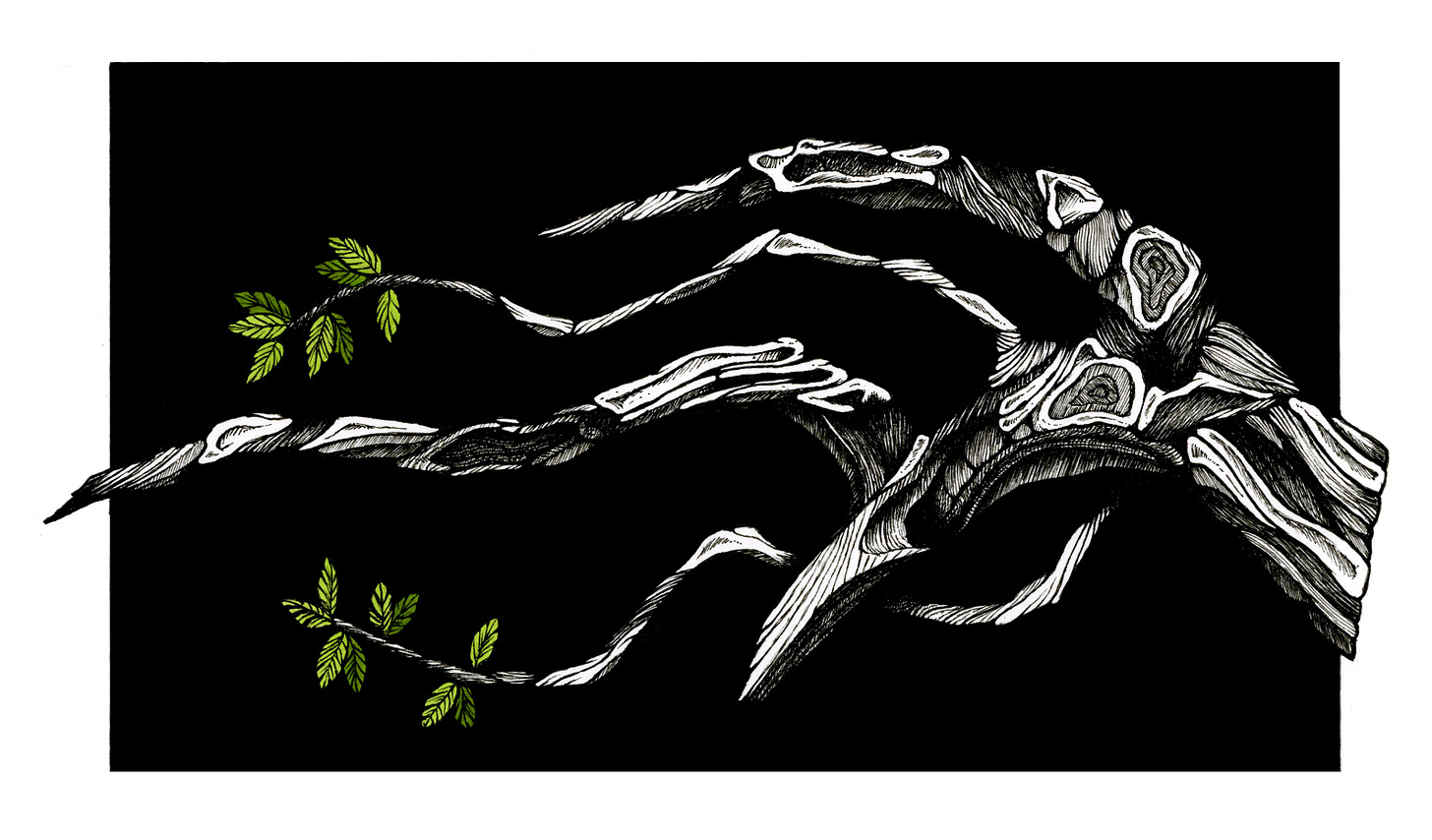Hello dear subscribers, I hope you are all well and surviving the insanity of the world unscathed. Seriously, what the hell is going on? Things seem to be going to hell in a handcart…
In my last post I described the project I am currently working on - an illustrated story about a bunch of tiny robots who live in a forest. This past week I concentrated on environmental design because I want the forest to be as much a character in the story as the robots, so I need to understand how the trees will look before getting stuck into the other character designs.
Trees are my favourite things on planet Earth. I’m not sure I believe in souls and spirits, but the sound of leaves moving in a breeze does something profound to my brain. It puts me in safe mode, the opposite of fight or flight. Drawing trees, on the other hand, can be a bit of a challenge because there are so many ways of representing them. You can go hyper-detailed, hatching every leaf and fold of bark, or use very simplified shapes and silhouettes, and of course there are a million options between these two extremes. I created the illustration at the top of this page for Substack author Robert Charboneau and it demonstrates the point quite well. The foreground trees are rendered in detail, while the background trees are just simple shapes, but the contrast between the two styles of representation gives the image some depth and keeps the illustration clean and uncluttered.
With that in mind, I’ve been working on the ‘foreground style’ for the trees and foliage in my story. Once this is settled, I can then work out a background style that feels cohesive.
The tiny robots in my story rely on solar power collectors to keep their batteries topped up, and I envision them treating the charging stations like holy relics. The robots would bring the solar panels out during the day to collect sunlight, then put them somewhere safe at night. I like the idea of this little community using a hollowed out stump as their safe space, so I started searching for images of trees that had been struck by lightening to use as references. One Google search for ‘gnarly old trunk’ later, and I ended up down an olive tree rabbit hole.
I enjoy olives as much as the next person, but I’m ashamed to say that until this week I had never given olive trees a moment’s thought, and couldn’t pick one out of a line-up. I now know they are incredible. There are 6,000 year old olive trees in the Mediterranean that still produce fruit. It blows my mind that a living thing could survive in the same place for thousands of years, not least because I would expect a dumbass human to come along and chop it down for firewood or to build an Air BnB during that time. The really ancient ones look extraordinary too, viewed up close the development of their roots and the bark’s texture is so chaotic it almost looks alien, I find it quite reminiscent of H.R. Giger’s xenomorph designs. I decided this would be my cue for foreground tree elements, and the illustration below is my first attempt at representing it.
For this piece I had in mind the branch of an ancient tree that was coming back to life after surviving a brush fire. As a standalone drawing I quite like it, I think the contrast between the areas of shadow and highlight look good. It ‘pops’ from the page, which is something I strive to achieve with pen and ink drawings. However, as part of a full narrative illustration, I think it’s too busy. I overdid the texture elements, and have to keep reminding myself to use shapes that will be recognisable when viewed as a small element of a larger illustration. But as a whole, I think I’m on the right track. I just need to refine the art style so that in conveys the same feeling with simpler hatching and rendering. Back to the drawing board then, but it a good way.
Thanks very much for reading, I hope you enjoyed this post, and I would love to hear and comments or suggestions you have about drawing trees!
Andy







Love this Andy! M
Your drawings of tree are beautiful.